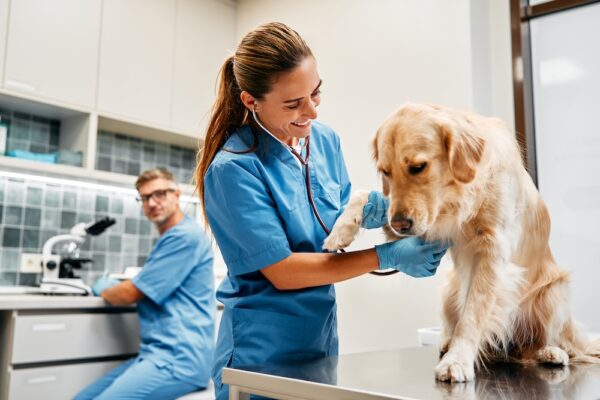A veterinary clinic’s website isn’t just an online business card—it’s a powerful tool for attracting new clients, booking appointments, and building trust with pet owners. But not all websites are created equal. A poorly designed site can frustrate visitors, drive potential clients away, and make your clinic seem outdated or untrustworthy. If your website isn’t helping you grow your veterinary practice, it might be time for a refresh. This guide will walk you through the best practices for website design for Vet Clinics to drive more appointments, increase engagement, and keep pet owners coming back.
Why Website Design Matters for Veterinary Clinics
Pet owners today expect a seamless online experience when searching for a veterinarian. They want to quickly find information, schedule an appointment, and feel confident in their choice. A well-designed veterinary website:
- Improves first impressions – Your website is often the first interaction a client has with your clinic. A modern, professional design builds trust.
- Increases appointment bookings – A user-friendly layout with clear calls-to-action encourages visitors to schedule a visit.
- Boosts local search rankings – An SEO-optimized site helps you appear in Google search results when pet owners look for a veterinarian in your area.
- Enhances client engagement – A well-structured site with valuable content keeps pet owners informed and coming back.
If your website is slow, cluttered, or outdated, potential clients may leave and choose a competitor instead.
Essential Features of a High-Converting Veterinary Website
1. Mobile-Friendly, Responsive Design
More than 60% of pet owners will visit your site from a smartphone. If your website isn’t mobile-friendly, you’re missing out on a huge number of potential clients. A responsive design ensures your site looks great and functions well on all screen sizes, from desktops to mobile devices.
A mobile-optimized site should have:
- Easy-to-read text and clear navigation.
- Clickable buttons that are large enough for touchscreens.
- A fast load time (Google recommends under 3 seconds).
If visitors struggle to navigate your site on their phones, they’ll leave and find another vet with a smoother experience.
2. Easy Online Appointment Booking
If your website doesn’t offer online appointment scheduling, you’re losing clients. Many pet owners prefer the convenience of booking online rather than calling during business hours.
The best veterinary websites feature:
- A clear “Schedule Appointment” button prominently displayed on every page.
- An integrated scheduling system like Amelia, Acuity Scheduling, or Vetstoria.
- Automated appointment confirmations and reminders via email or text.
Online booking makes scheduling easier for pet owners and reduces phone calls for your staff, freeing up time to focus on patient care.
3. Clear and Concise Navigation
A confusing website layout leads to frustration and lost clients. Your website should have a clean, intuitive navigation menu that helps visitors quickly find the information they need.
The most important pages every vet website should include:
- Home – A welcoming introduction to your clinic.
- About Us – Information about your veterinarians and staff.
- Services – A clear breakdown of the treatments and procedures you offer.
- Appointments – An easy-to-find page for scheduling visits.
- Contact – Your phone number, address, and hours of operation.
A simple, well-organized navigation bar at the top of your site makes it easy for visitors to move through your site without frustration.
4. Strong Call-to-Action (CTA) Placement
Many veterinary websites fail because they don’t guide visitors to take action. Every page should include a clear call-to-action (CTA) encouraging pet owners to book an appointment, contact your clinic, or sign up for email updates.
Best practices for CTA buttons:
- Use action-driven language, like “Schedule Your Pet’s Visit Today” instead of just “Contact Us.”
- Make buttons bold and easy to see, using contrasting colors.
- Place CTAs at the top of the page, in the middle of content, and at the bottom to capture visitors at every stage.
A well-placed CTA significantly increases conversions and encourages more pet owners to schedule a visit.
5. Fast Load Speed and SEO Optimization
A slow website frustrates visitors and hurts your Google rankings. Studies show that 53% of users leave a site if it takes longer than 3 seconds to load. To keep your website running smoothly:
- Optimize images and compress large files.
- Use fast, reliable hosting.
- Minimize excessive plugins and scripts that slow down performance.
Speed matters—not only for user experience, but also for SEO. Google prioritizes fast-loading websites in search rankings, meaning a slow site could be costing you potential clients.
6. Trust-Building Elements: Reviews, Staff Bios, and Community Involvement
Pet owners want to feel confident in their veterinarian before scheduling a visit. Your website should include trust-building elements that reassure new clients and establish your credibility.
What to include:
- Client Testimonials and Google Reviews – Showcasing positive reviews builds trust and social proof.
- Meet the Team Page – Introduce your veterinarians and staff with professional photos and bios.
- Community Involvement – Highlight your participation in local pet events, charity work, or partnerships with shelters and rescues.
A personal touch helps potential clients feel connected to your clinic before they even step through the door.
7. Informative Blog or Pet Care Resources
Adding a blog or pet care resource section boosts SEO and keeps visitors engaged. Writing educational articles about common pet health concerns positions your clinic as an expert while attracting new visitors through organic search.
Some blog topic ideas include:
- “How to Tell If Your Pet Needs an Emergency Vet Visit”
- “5 Signs of Dental Disease in Dogs & Cats”
- “The Importance of Vaccinations for Puppies and Kittens”
By providing helpful, relevant content, you keep pet owners coming back to your site and increase the chances of them choosing your clinic for their pet’s care.
Invest in a Website That Works for Your Clinic
A well-designed veterinary website doesn’t just look good—it drives real results. If your current site isn’t attracting new clients or making it easy to schedule appointments, you could be losing business.
By focusing on mobile-friendly design, fast load times, simple navigation, strong calls-to-action, and trust-building elements, your website can become a powerful tool for growing your practice.
If you need an affordable, high-converting veterinary website, Vet Marketing by Signal specializes in custom, SEO-optimized Website Design for Vet Clinics. Let’s create a website that helps you attract more pet owners and fill your appointment calendar!
Get started today and take your clinic’s online presence to the next level. 🚀




